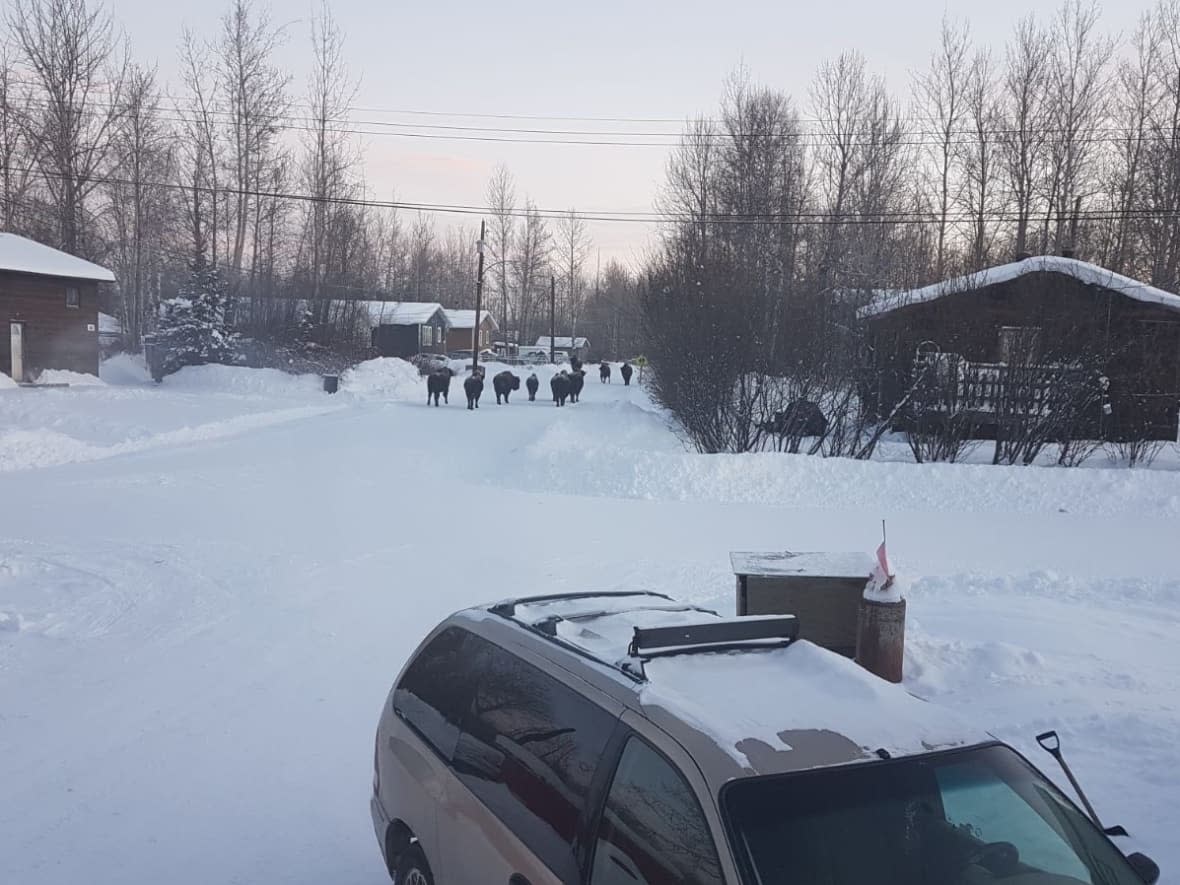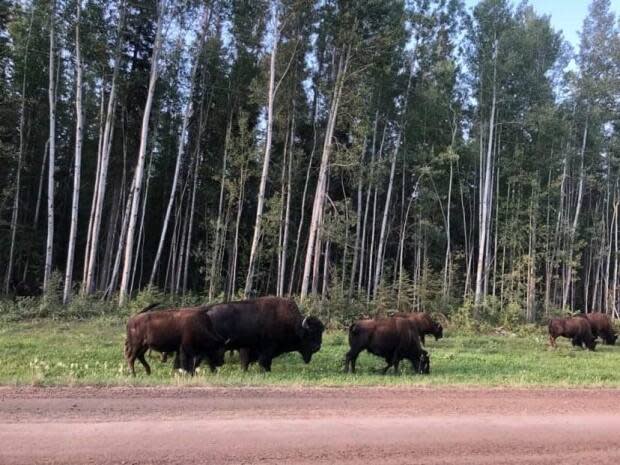Urine-stained lawns, broken trees and dead dogs: living with bison in Fort Liard

Since the 1980's bison have been living in Fort Liard and area as part of the N.W.T.'s strategy to revive the endangered animal.
But some residents, including elder Mary Behile, feel as though the animals have been making themselves too at home.
"They're just pain in the whatever. They're just no good. We don't eat them," she said.
Behile said there will be between 20 to 30 of them hanging around her house at night, and she wakes up to discover hoof prints, urine and droppings all around her house.
She said it makes her worried as the animals, weighing between 300 and 1,000 kilograms, can easily break down a fence, door or tree.
"It's really scary," she said, adding she'll use a horn to try and scare them away.
Acho Dene Koe First Nation sub-Chief Brenda Berreault said the bison have become a real concern in the community.
"They're all over, they're not controlled and [they're] breaking peoples trees," she said.
Berreault said she also worries about a potential run in between a bison and a child.
Dogs and bison
The subject of bison in the community rose to the fore after a dog was reported on Facebook to have been killed by one.
According to comments on the post, the dog was killed when a bison attempted to eat some hay placed inside the outdoor dog house. The dog was chained up outside at the time and a confrontation led to the dog's death.
Mike Westwick, a spokesperson for the department of Environment and Natural Resources, said in an email on Thursday that the department received a report about the incident.
He said an officer went to the location and found bison tracks, but wasn't able to confirm the cause of death as the dog had been removed by the owners.
This also wouldn't be the first time a dog was killed by a bison: in 2010 a bison charged at an off-leash dog, killing it.
Wes Olson is a bison consultant not affiliated with the N.W.T. government. He's studied and worked around the animals for 40 years. Olson said it isn't normal for bison and dogs to be living in the same habitat, and the cohabitation would likely trigger some defence mechanisms in bison who deal with predatory wolves in the wild.
"Some view dogs as predators and they're automatic defence mechanism kicks in when they feel threatened by a dog. So I suspect that's what happened in this case," he said.

Olson said the only way for a bison to attack a human would be if the person got too close to it.
"They have a personal space that is violated when people or dogs or wolves or any other animal gets too close to them," he said.
Westwick echoed this point, adding that female bison can be protective of their calves and solitary male bison can be startled easily.
Olson said the situation of humans living among bison is exceptional to the North.
"Obviously people and bison don't mix, when in close proximity to each other somebody's got to give, the animal or the person," he said.
Olson also worked on incorporating the bison population into that area of the territory in the 1980's which he said the community was in support of at the time.
"Of course things change as people become more familiar, interact with them more, as the herd grows more, encounters increase," he said.


